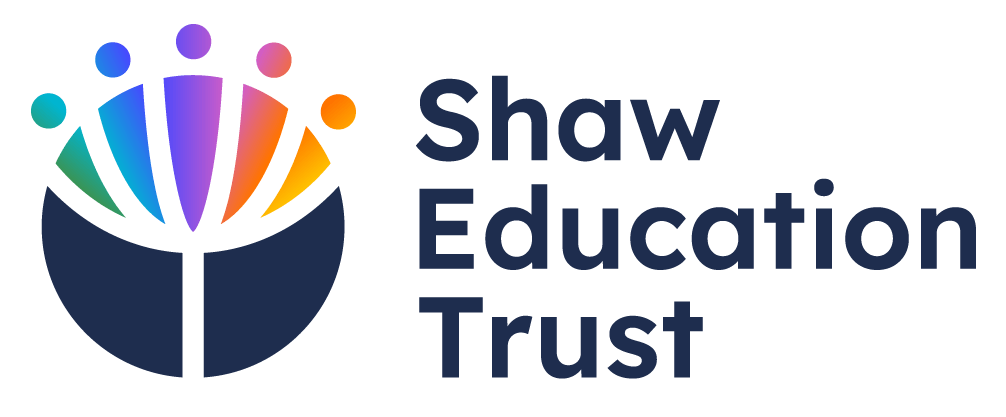English - Reading
Intent
At Redhill, Reading is fundamental.
Reading is a life skill which is the cornerstone to enabling our children to become articulate communicators and we use the National Curriculum to do this effectively. We believe that all children should have the opportunity to be fluent, confident readers who are able to successfully comprehend and understand a wide range of texts.
We want pupils to develop a love of reading, a good knowledge of a range of authors and be able to understand more about the world in which they live through the knowledge they gain from texts. It is not only key for academic success across the whole curriculum but remains a crucial lifeline which prepares pupils for the next stage of their education. The aim for all of our children is to be able to read fluently and with confidence in many subjects. The foundations for successful reading at Redhill are formed through our comprehensive phonics programme: Read Write Inc. We use Read Write Inc because it provides a succinct, repeated learning process which allows Redhill children the opportunity to embed new skills before applying them in a comprehensive manner.
At Redhill, we understand the importance parents and carers have in supporting their child to develop both word reading and comprehension skills, and so we aim to encourage a home-school partnership which enables parents and carers to understand how to enhance the skills being taught in school through good quality texts.
Implementation
There are many layers to the effective teaching of reading at Redhill.
How we build our reading culture
At Redhill, reading is an essential part of our curriculum offer. To ensure that our reading culture is sustained and embedded we use a range of strategies that are consistently evolving to adapt to the current needs of our pupils-if they see an adult, they see a reader.

Early Years and Foundation Stage
Pupils in the Foundation Stage and Early Years are introduced to reading through the Read Write Inc programme daily. They begin their reading journey, learning initial sounds and letter formation through rhymes, followed by segmenting and blending sounds into words, captions and sentences. Teachers and teaching assistants provide targeted support through daily reading interventions where targeted questioning requires pupils to discuss texts which lays the foundations for Key Stage 1 and Key Stage 2 comprehension skills. Children are encouraged to memorise their favourite stories; they build their vocabulary by making links between reading and writing and, through role-play, explore different characters, settings and events.
Read Write Inc Phonics
As a school we teach early reading through the Ruth Miskin Read Write Inc scheme. It is a complete literacy programme, for 4 to 7 year-olds learning to read and write words. Support for Read Write Inc continues into Key Stage 2 for those children who need it. From Year 4 onwards, children who still need support with phonics can use the Fresh Start resources. Read Write Inc is taught from Nursery at Redhill where children are introduced to Fred the frog who can only speak in sounds and not whole words. Fred helps children to listen for sounds in words and blend them to make a word. Through rhymes such as Maisy Mountain Mountain and Nobby’s Net, children remember the diagraph and match it the phoneme (sound). Children use the rhymes to begin to form the letters.
Fred moves into Reception with the children to help them develop their sound knowledge into reading words. Children read words from flashcards using the sound buttons. The teacher touches the button as the children say the sounds with increasing speed to hear the word. This is called, “Fred out loud”. Once children have mastered Fredding out loud we move them on to reading with more fluency. Children are encouraged to Fred in their head which is saying the sounds in their head before saying the whole word aloud. This quickly progresses onto a speedy read whereby children can read the word with out segmenting.
Children are taught to use the sounds to spell words. At the end of each sound lesson, children are taught to segment words with the sound they have learnt. Children say the word listening for each sound before counting the sounds on to their fingers which we call Fred Fingers.
Most children in Reception are able to move onto learning the longer vowel sounds such as ay- may I play and ee – what can you see. As well as words containing close blends such as st and dr.
Children begin to read sentences through ditty books moving onto short story books all matched carefully to the sounds taught. Through the reading books, children begin to learn common exception words known as, ‘the tricky words Fred can’t say’.
In Year 1 children are taught the alternative graphemes for a sound. Sounds like ee- ea- e-e. Children are also taught the letter name to match the sound. Children’s reading books increase in length as their sound knowledge and fluency increases.
Key Stage 1
Pupils are taught in both whole-class, small and individual groups focussing on individual sounds, high frequency words and common exception/ nonsense words through Read Write Inc lessons and guided groups at least 4 times a week. We use the Read Write Inc agreed progression for the teaching of new sounds. Pupils in Key Stage 1 receive targeted reading interventions where they have the opportunity to practise their reading oral fluency and improve their comprehension skills on a 1:1 basis. These interventions take place either daily, three times a week or once a week depending on individual reading ages based on their chronological age.
Reading resources in Key Stage 1 consists of:
- Phonics: Decoding multi-syllabic words and alternative spellings as found in Read Write Inc
- Read Write Inc book bag books
- Class text via Oxford Owl
- Read Write Inc virtual classroom
- Reading Aloud for Pleasure: daily sessions with author studies in class novel
Assessment
During the Summer Term, Year 1 pupils take part in the Phonic Screening check which assess their ability to apply what they have learned. Pupils who have not passed their screening will continue to have intervention to support their needs on an individual basis; they are retested in Year 2.
Children on the Read Write Inc programme are tested each term using the Read Write Inc assessments. The results are tracked and the Read Write Inc team support based on assessment.
Children in Key Stage 1 also take the NTS assessments (National Test Style Standardised Assessments) to triangulate data.
Key Stage 2
Key Stage 2
Pupils continue their reading journey in a variety of subjects. Guided reading continues to be the main tool that we use for the teaching of reading in key stage 2 which is delivered daily using a range of methods and resources.
One shoe does not fit all and so we tailor our approach to reading based on the needs of each cohort through small group reading sessions, whole class texts and comprehension questions provided in resources such as The Guiness Book of Records, PinPoint comprehension and Vocabulary Ninja. We use a wide range of resources to expose children to a variety of text types and authors. Pupils are taught about different reading skills through the acronym of VIPERS: Vocabulary, Inference, Prediction, Explanation, Retrieval, Summary and Sequence. Throughout the week, children experience these skills through an I do, We do and You do teaching approach.
Reading Plus:
Reading intervention is completed through Reading Plus, a digital tool that creates an adaptive, personalised reading journey for each child based on assessment. This ensures children are reading a text at the right level. As the children work to develop the skills and stamina required for extended reading with good comprehension, they will be presented with personalised scaffolding to build independent reading skills. Vocabulary is taught explicitly and within context. Children who need additional fluency develop their visual skills using two key activities: Flash and Scan. These activities improve the child's ability to immediately recognize common letter clusters in words and move fluently through text.
Reading resources in Key Stage 2 consists of:
- Independent Reading: access to daily reading books, books are linked to Lexile scores.
- Reading Plus: Vocabulary, Visual skills and Reading
- Etymology and Morphology (Rising Stars Spelling)
- Guided Reading: Pinpoint, Vocabulary Ninja, CGP texts
- Reading Aloud for Pleasure: daily sessions with author studies
Assessment
Children in Key Stage 2 take the NTS assessments (National Test Style Standardised Assessments) to triangulate data three times a year.
Reading Plus assessments are completed three times a year which produces a benchmark and shows progress.
At the end of Key Stage 2, children sit their end of key stage SAT's (Standard Assessment Tests).
Impact
As a good school, we always aim for children to leave Redhill as competent readers who can recommend books to their peers; have a hunger for books and seeking out new authors, texts and genres which includes poetry and have a growing confidence in evaluating and discussing authorial language. As a Year 6 reader, transitioning into secondary school, we aspire that children are fluent, confident and able readers, who can access a range of texts for pleasure and enjoyment, as well as use their reading skills to unlock learning and all areas of the curriculum. Our outcomes will always aim to be at least in line with national averages (2021) for both age-related and greater depth expectations in both Key Stage 1 and Key Stage 2.
We want our pupils to acquire a range of self-help strategies so that they have the tools to continue to improve their reading skills in the future. We firmly believe that reading is the key to all learning and so the impact of our reading curriculum goes beyond the results of the statutory assessments.
Parents
We endeavour to support our parents to support their children at home in a range of ways.
These include:
- Staff supporting parents to grasp how reading is taught within school so that strategies can be mirrored at home through parental workshops and class-based sessions.
- Through Termly Learner Conversations, we model for our parents how they can help their children at home.
- We provide examples of next steps within reading records.
- We run parent groups to support the teaching of phonics.
- Parents are signposted to resources which could support home learning.

Ambition

Never Give Up

Teamwork

Love Learning

Equality & Fairness

Respect


